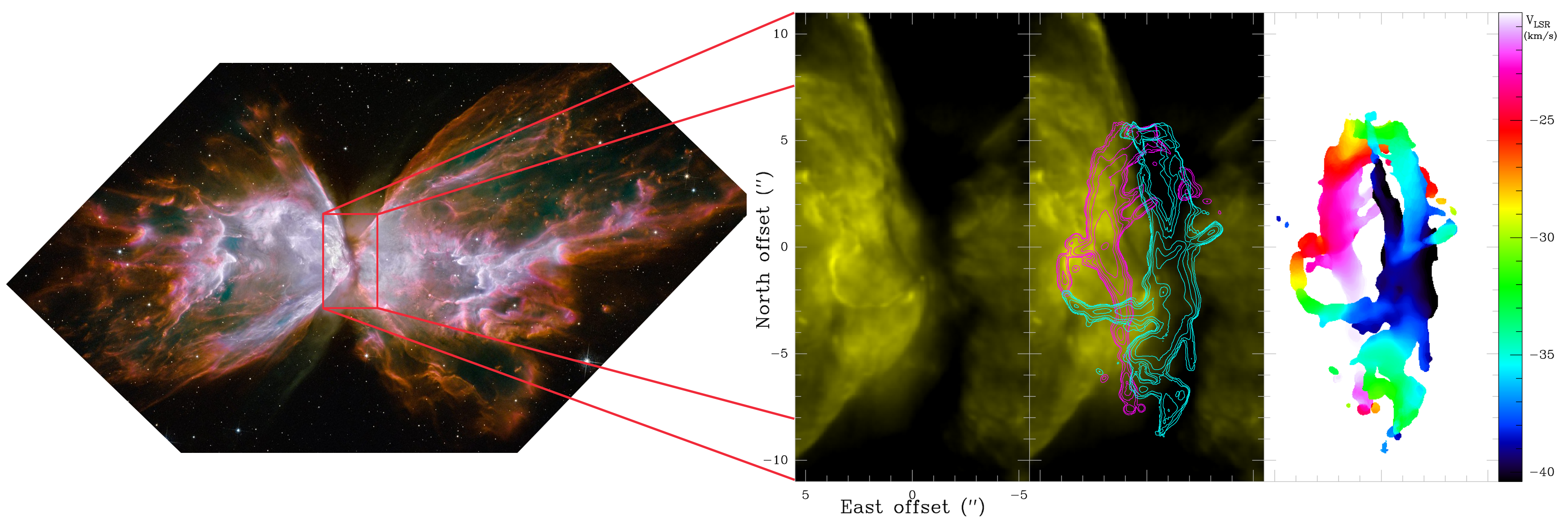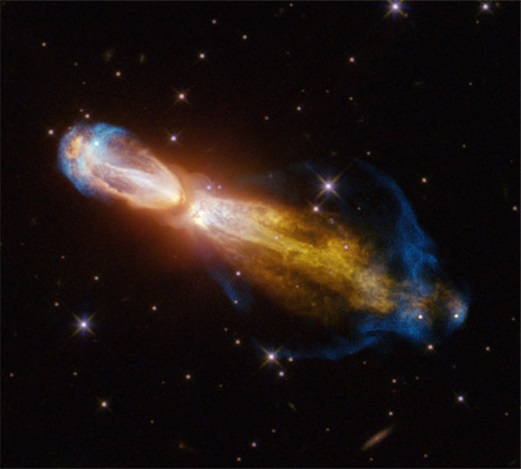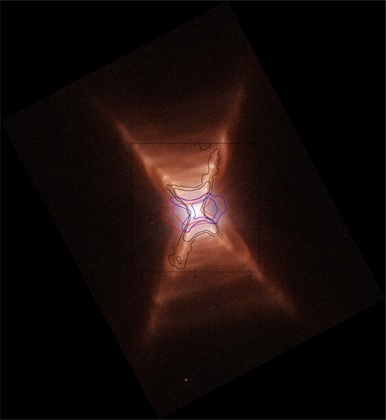Stellar evolution
Most stars die after ejecting almost all their mass, becoming spectacular and wide nebulae; our Sun will also do so. OAN astronomers are actively studying these last phases of the stellar evolution.
When a normal star gets old, it undergoes a great expansion, its radius becomes so big that the star would engulf any planet rotating in the same orbit as the Earth. These stars, which are now relatively cool, are named red giants. The evolution beyond this phase is precisely the most spectacular in the life of the majority of stars. Red giants lose mass copiously, and this process tends to increase with time. When the star has ejected most of its mass, the compact central core becomes visible. In only 1000 or 2000 years, the star evolves from a red giant, cool and very large, into a blue or white dwarf, extremely compact and hot.
These dwarf stars are still surrounded by the previously ejected material that, now illuminated and excited by the residual star, is called planetary nebula (for historical reasons, though they have nothing to do with planets). Planetary nebulae themselves are in vertiginous evolution, with an important dynamical interaction between the different phases of the stellar winds, that finally shape the beautiful images often shown by them. In this way, old stars become extended nebulae.
Specifically, we highlight our studies on:
- The structure of envelopes around red giants and the chemical abundances in them, both in general and for outstanding objects.
- The structure and chemistry of planetary nebulae. Particularly relevant is our work on the coldest components, that usually contain most of the nebular mass.
- The structure and dynamics of very young planetary nebulae. Let us mention our studies of the wind interaction, the associated shock waves, and the effects of stellar binarity in this phase.
Image obtained by OAN astronomers (in collaboration with scientists from other countries) of the young planetary nebula OH231.8+4.2, nicknamed the Calabash Nebula. The yellowish elongated structure is a double stream ejected by the central star, which is shocking outer shells. The shock accelerates and heats up these shells; components excited in this way are shown in blue. (Image courtesy of ESA/NASA & Judy Schmidt.)
The Red Rectangle: molecular emission (contours, observations performed by our astronomers) and optical image (obtained by the HST, courtesy of NASA). Black contours show gas in expansion and the blue and red contours show gas in rotation, respectively approaching or receding from us. All the gas was ejected by a dying star; the rotation appears because the central star is double and a part of the rotation energy of the stellar system is transferred to the nebula.

Observations performed by our astronomers of the material around the binary star R Aqr, composed of a red giant and a compact companion. Right panel: map of the molecular emission, showing a flat, spiral structure seen almost edge-on. Central panel: emission of dust grains (at a different scale), note the flow of material from the giant star (grey circle) toward the companion. Right panel: theoretical predictions of the structure of a red giant wind when it is gravitationally affected by a companion (seen edge-on; from calculations by S. Mohamed & Ph. Podsiadlowski); the calculations are basically compatible with the observations.

Left: Image of NGC 6302, the Bug Nebula, in visible light (obtained by the HST, courtesy of NASA). Right: Close-up of the nebular waist region, with the molecular emission overimposed (obtained with ALMA by our astronomers). We observe two molecule-rich rings, one of which is very massive and constrains the waist of the bipolar nebula. Bluish and redish contours in the middle inset indicate gas approaching us or receding, respectively. The right inset shows the line-of-sight velocity of the gas in these rings.




